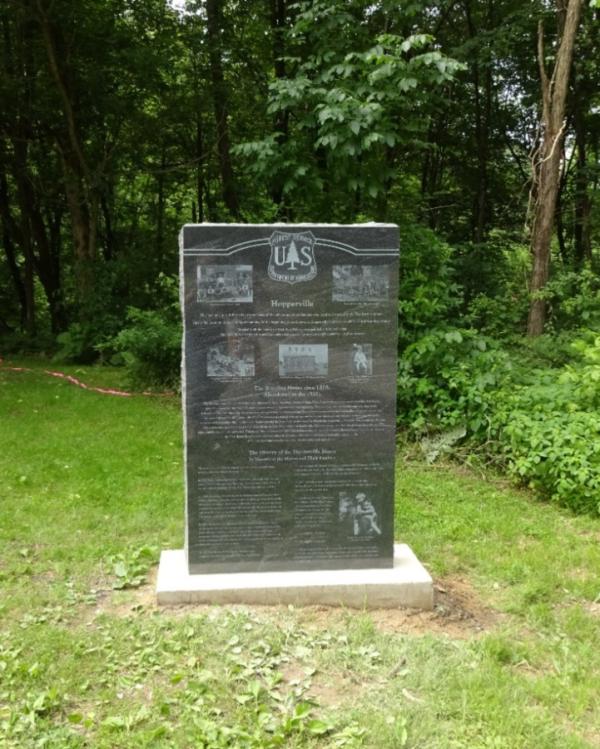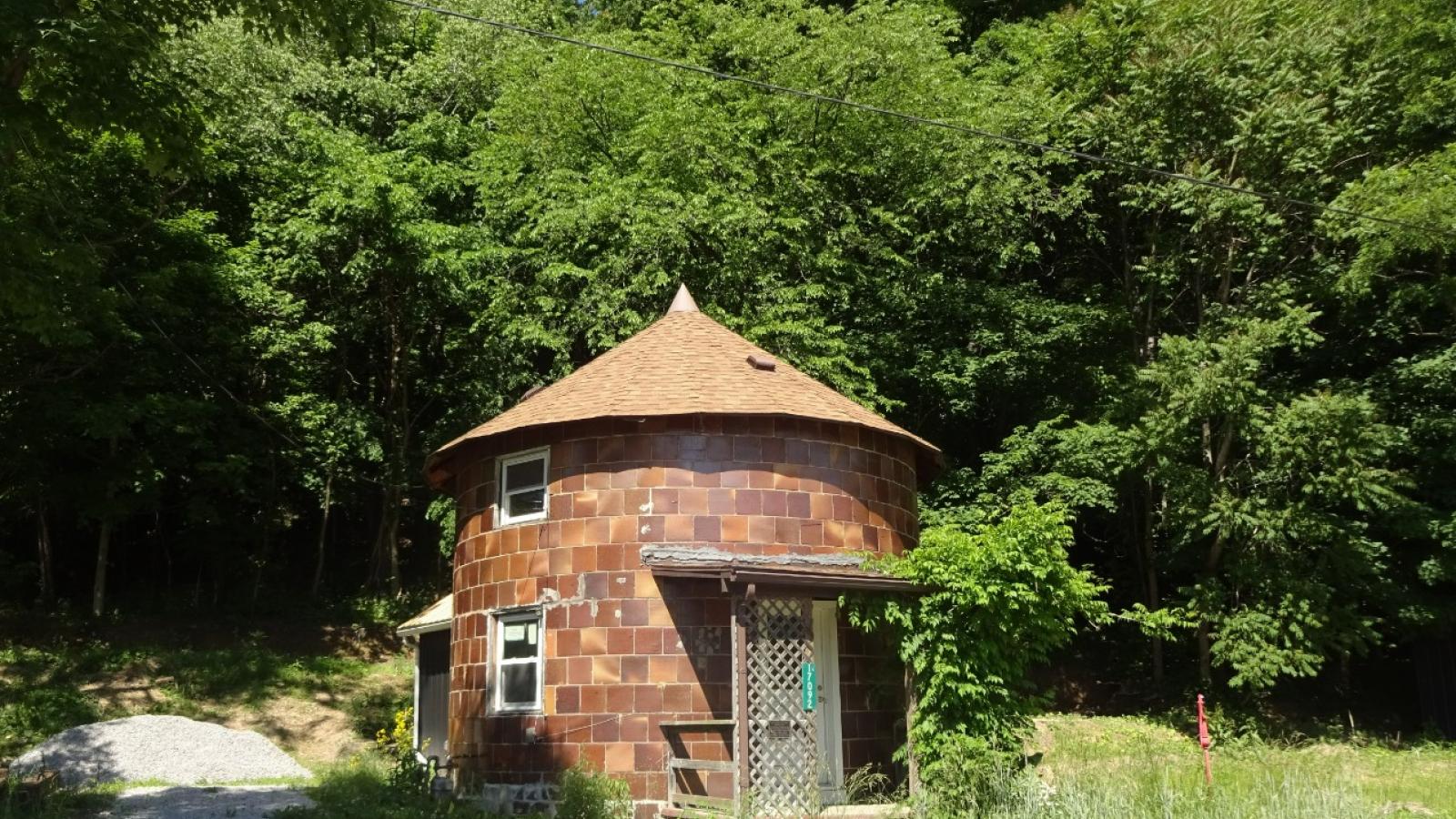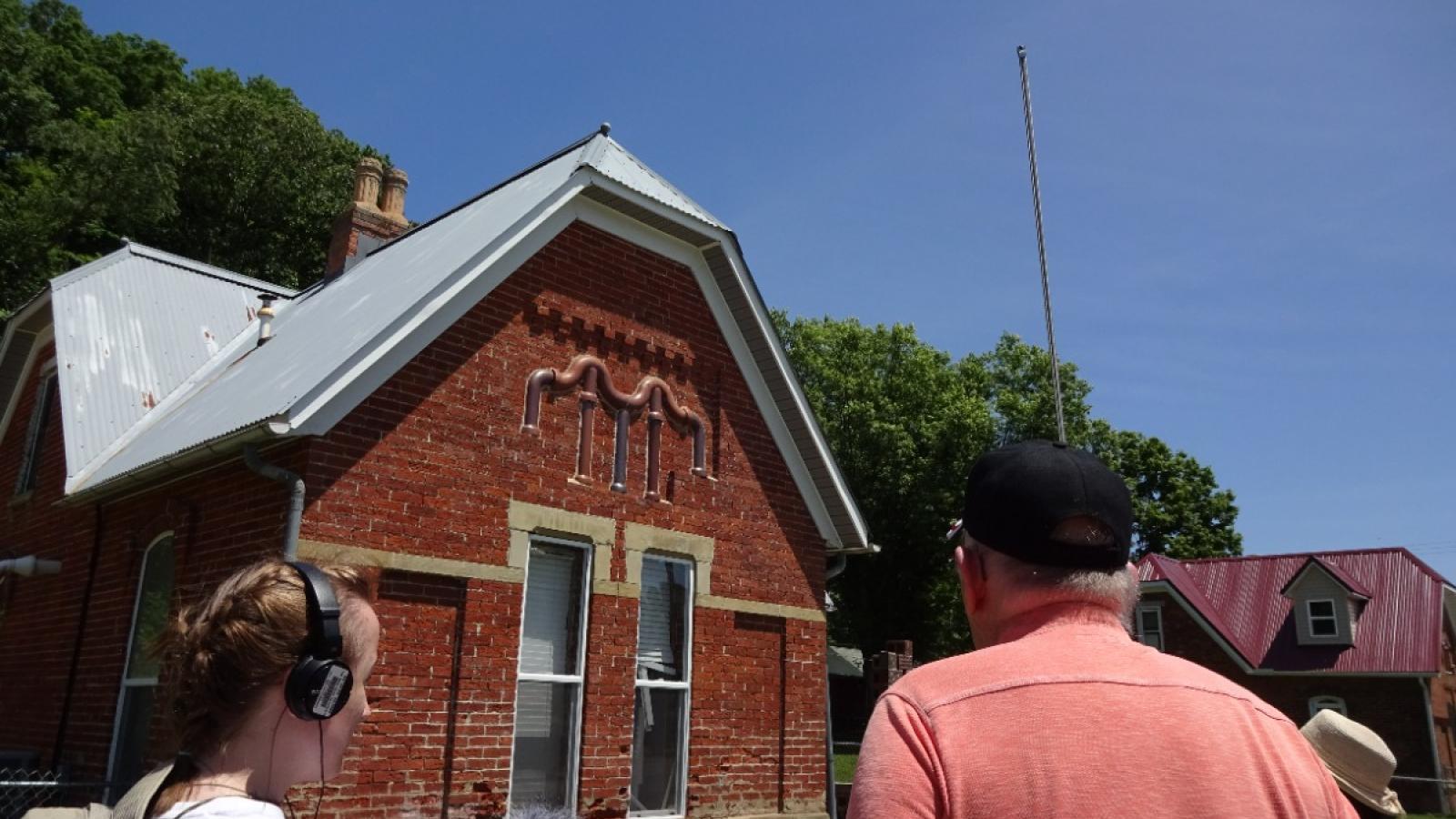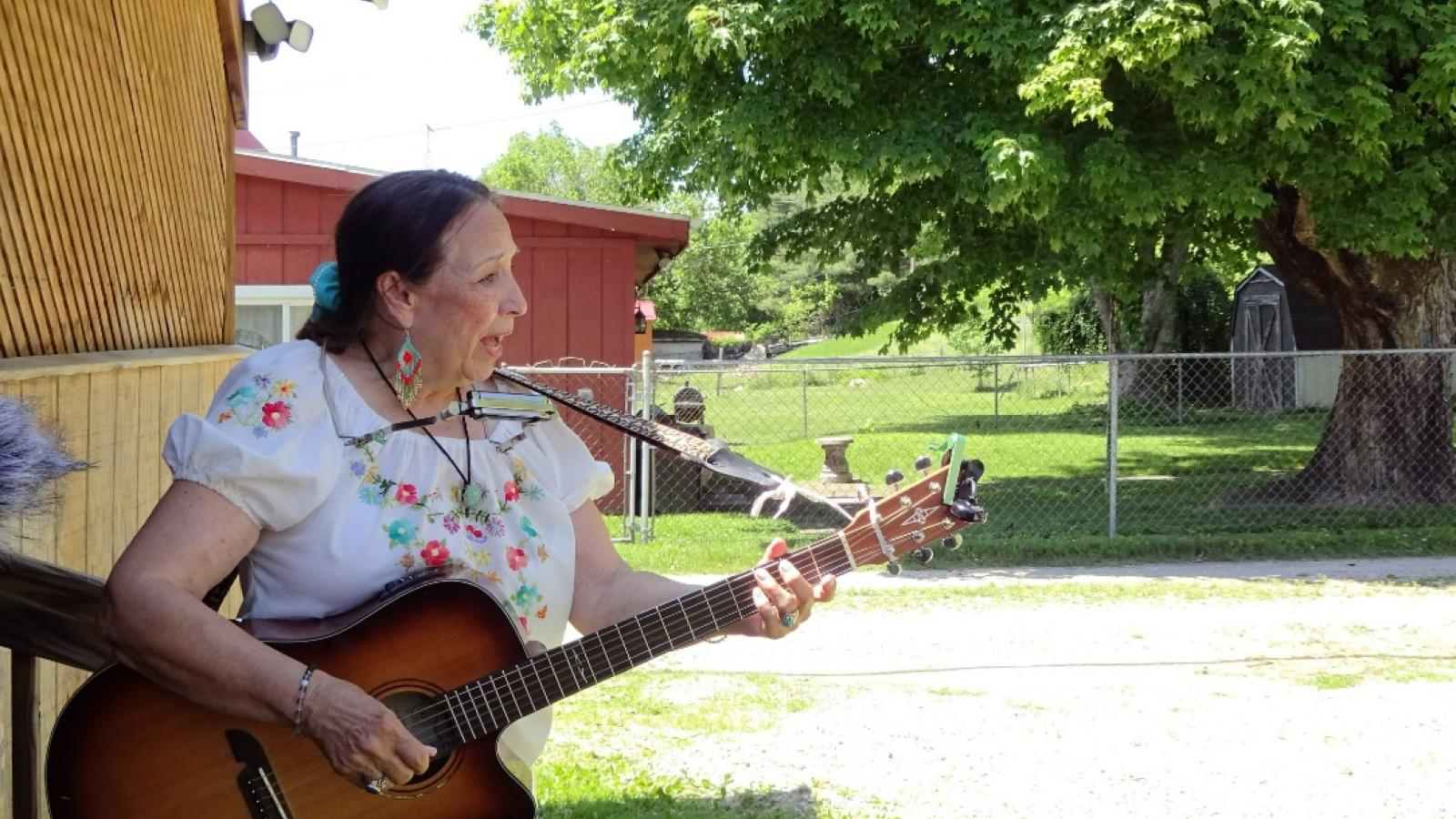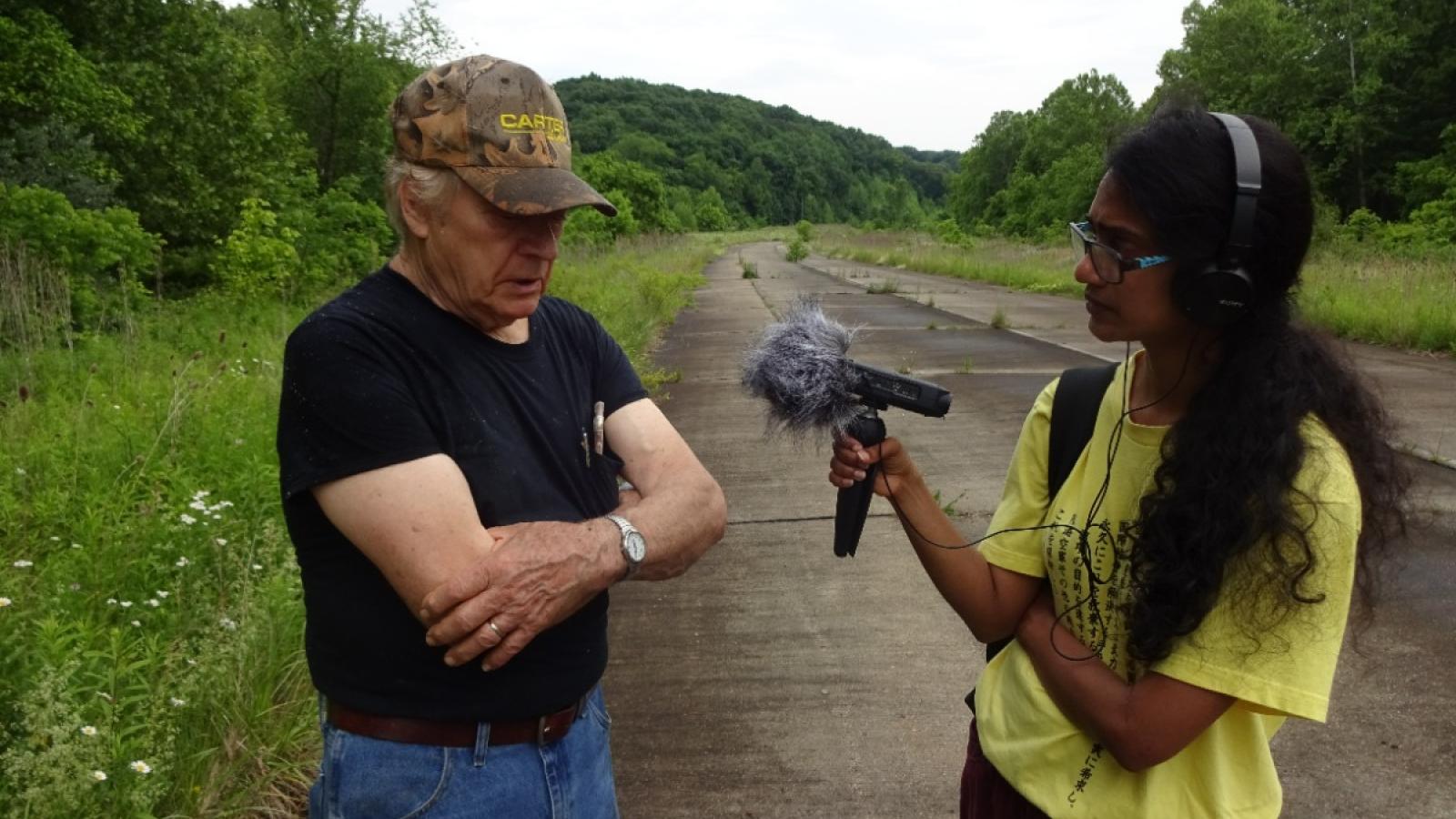Observations emerge everywhere in the field. Some of our most insightful discussions about the work we were doing in Southeast Ohio occurred in the car while driving to and from places of interest. On our way back from an interview with our community contact Madison Donohue, we were thinking about the main theme of our project. And then it suddenly hit us – What is the Appalachian understory? Our time had been spent meeting people from Appalachian Ohio - getting to know them, listening to their stories, and documenting them - all while working closely with our community partner, Appalachian Understories (AU). As students of the Ohio Field School (OFS) we were being given access to an environment neither of us had known much about before. We realized then that this was the question we had been seeking to answer all along.
The Understory and Appalachian Understories
What is an understory? Madison explained the term “understory” and the name of our community partner “Appalachian Understories” thus:
Madison: Understory trees are like a species of trees, or a category of species of trees…So it's, it's like a ecological term. But we also like to think of it in the idea of like these lesser told stories of the region…you know, stories of diversity, that aren't told as much in our history. So it's kind of like a double entendre and educational in itself.
It is these lesser-heard histories about people and places that we were searching for and came to know through our partnership with AU. AU has a tripartite focus of providing a sense of place, preserving cultural knowledge, and benefiting human health, primarily met through a range of guided tours, all focusing on the region’s natural and cultural history. Both people of the region and visitors attend these tours, and there are tours of all kinds, ranging from 20-mile rides for experienced bikers, to an hour’s hike on a paved path, to walks with historians, to even overnight events. Indeed, a key part of these adventures is that AU involves ways for “everyone to play,” and in line with this notion of play for all, AU emphasizes accessibility, inclusivity, and diversity.
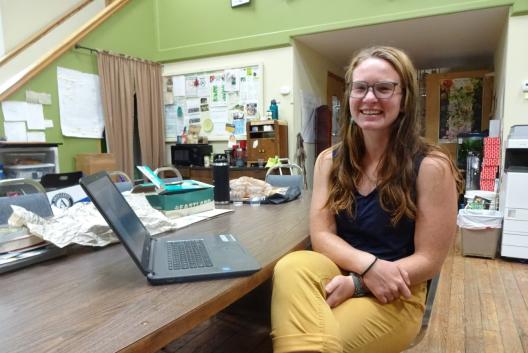
Haydenville, Redrow Holler, and Their Historians
The “Last Company Owned Town” tour, the Haydenville tour organized by AU, was our first experience of Haydenville and what used to be Hopperville, later called Redrow Holler. This tour took place on 4th June 2022 and was quite the homecoming for former residents and descendants of residents of Haydenville and Redrow Holler.
Haydenville was founded in 1852 by Peter Hayden, who not long after, created the Haydenville Mining and Manufacturing Company (1882). The early company town was populated by workers and their families who built their homes, churches, post office, and shops from the dark red brick which was fired in the area. The hill above Haydenville became the town of Hopperville, later called Redrow Holler. Its two names are not without meaning: the former being named for the coal hopper owned by Peter Hayden which resided on the hill and the latter for the rows of red brick company houses. A dedicated and thorough history of Haydenville can be found in Haydenville: The Company Owned Ohio Town that Outlived the Company by Larry A Horn Sr. Larry is a historian and life-long resident of Haydenville whom we met with for our project and who told us many stories of his years in the town, including how he came to write his book, inspired by his friend Buddy.

Larry: I would walk back and forth, so, “Hey come on over today, we’re gonna have a big chicken!” Have some chicken or I would fix something, and we’d trade back and forth and stories. And then he would tell me this and then he said, “Well why don’t you write a book?” and I said, “Well I will.” So we just, that and then he told me “Uh well see Don Keels is down here...” and these other people and it just kinda grew. And they would tell stories and then I’d write it down and change ‘em and change ‘em around and then they’d tell me the history stories and all that. So it was quite a chore. And then some of it that I wanted to be sure was exactly right, I got the copies of deeds and put on that.
Unlike Haydenville, Redrow Holler no longer exists, and yet many of the people who lived and grew up there certainly do. To them, Redrow Holler is more than a fond childhood memory; it is a significant place that deserves to be remembered. That’s why Elaine (Lois) Hutchinson, with a community of Redrow Holler descendants, wrote to the Athens District Manager requesting the placement of a historical marker where the town once was. This remembrance project – the Hopperville monument – in turn set in motion the “Last Company Owned Town” tour with AU.
It is during this tour that we met Pete Crane. Pete grew up in Redrow Holler and could probably tell you the names and favorite breakfast foods of every person in the holler (historians Nancy Devol Rose and Elaine Hutchinson also attested to his powers of memory!). He is in the process of making a diorama of the holler and has already completed one of the boarding house. Pete shared his feelings about the holler and his family through a multitude of stories. But to really know what it was like, you have to listen to him.
Madison: What about High Pockets?
Pete: Oh, High Pockets? High Pockets, he was a farmer. On the side, he worked in a factory, and he worked in the set, or he worked in a drawl game, which drawls baked material out of the kilns. And he farmed a little on the side. And he was like six foot six, six seven and his nickname was High Pockets. But he could reach down inside of the nine-way conduits which had nine four-inch holes in it. He would put his arms clear down in there and then make a fist and when he done, it would fill up that four-inch socket. Then he'd pick them up like this and walk with them, two of them.
Madison: How much do you think each one weighed?
Pete: Well over 100 pounds, I don't know. Boy, they were big.
Pete also took us on a hike through the woods behind the Haydenville Cemetery. He showed us both entrances to the Haydenville tunnel (the train tunnel that used to connect the mine to the factory in Haydenville) and old Route 33. Nothing looked like it did when Pete lived there, but he could still navigate those woods. He stood on the cracked pavement of old 33 noting that this was the spot in which his house once stood. He walked a little way down the highway and noted where Nancy’s house and the butcher used to be.
This experience was invaluable to us both; we felt deeply appreciative that Pete had shared these locations with us, which were very special to him and to others in the community. There is something to be said about knowing that the old locations of Redrow Holler will never be lost to time. Different as they may look, they are not lost to Pete.
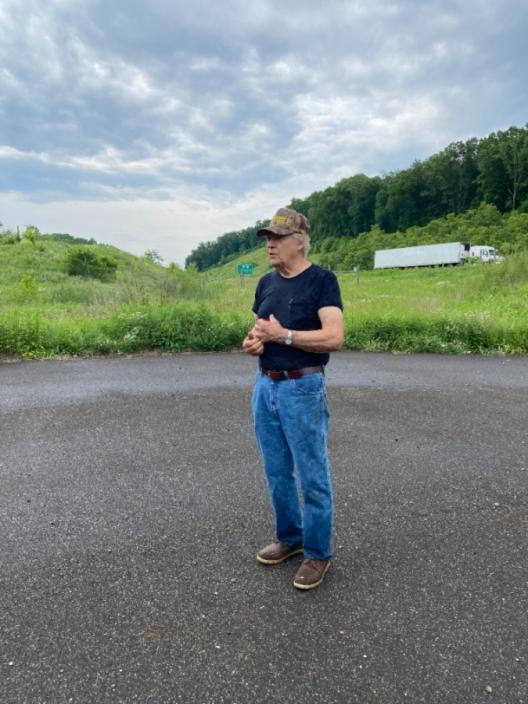
We also had a chance to talk to the historians Nancy and Elaine. Nancy and Elaine are sisters-in-law, and while Nancy grew up in Redrow Holler and Hopperville (and was one of Pete’s neighbors), Elaine grew up on the other side of Haydenville, two miles off a town named Union Furnace.
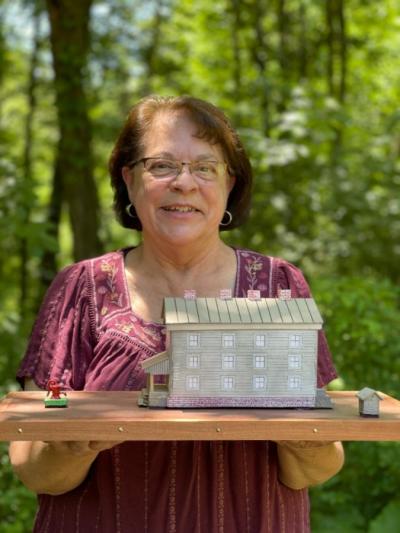

Right: Elaine Hutchinson holding a diorama of the old boarding house made by Pete Crane.
Left: Nancy Rose wearing a shirt she hand-made and embroidered, skills she learned while living in the Holler.
Out of Nancy’s many memories growing up in Redrow Holler, we quote a “life lesson” Nancy learned about kindness to strangers through encountering a hobo, a type of migrant worker in the US.
One day I was out playing in the front yard and the road - at that time route 33 went right past our houses right through there. But I was out there playing in the in the front yard and all of a sudden, the train the train tracks went past the whole front through Haydenville right on past our house. And one day it must have been around October. I think I must been about three or four. Anyway, suddenly I was just frightened because these figures jumped, leapt off of this train – this these coal trains that were going by and they just looked like I don't know what, I was so young. Like we didn't have TV then. So I had no way of knowing what these figures were. But they all had like, sticks over them and they were hobos. I didn't know it at the time, but they were black because they had been on these coal trains and they just went around the country, it was after the war. And they hopped off and they ran in every direction. They just ran in every direction different houses. They go to different houses and the one headed toward our house.
And I, it frightened me so, I ran screaming into the house. And I said, “Oh, you know, they're gonna get me, they're gonna get me.” And so mother come out and she saw that they were hobos, but they were all black because they were covered with, with coal dust. And then they had these hobo sticks over there with everything they own was just in a little round bag. Just, you know, like Red Skelton used to, to do. He played a hobo. Well anyway. And so she she brought me into the house, and she sat me down on my little chair there in the living room. And she said, she went to the door and talk talked to to this creature. It was a person, but I…I was so young, I had never seen anything like this. And you're innocent, because in them days, we didn't have TV or anything like that yet.
So she sat me down on her little chair and she gave me a life lesson. She said, “Now, Nancy, I'll tell you,” she says. “This man is a hobo.” And he says, she said, in the in the Bible, it talks about that sometimes you will entertain angels unaware. So she said, “I'm going to fix him a sandwich and give him a bowl of soup.” And so that's what she did. He sat outside and she gave him a sandwich and a bowl of soup. And then other neighbors evidently did the same thing. And then in the next train went through, evidently they scattered got back on the train and went on. But I've always remembered that story. And so I always think about something like that. It could be an angel unaware, you know, so I want to help people. You just never know.
Though Elaine had never lived in Haydenville or Redrow Holler, her mother was born in the Hopperville boarding house, and the photograph of Elaine above shows her holding the replica of this building. Indeed, this connection is what started the Redrow Holler/Hopperville remembrance project described above. Taking out a photograph of a little girl, now on this Hopperville monument, Elaine noted, “And this is the picture of my mother that started the whole project.” The conversation she and Nancy had with us (Shalini and Emily) about these beginnings is quoted below:
Elaine: And this is the picture of my mother that started the whole project.
Shalini: Oh!
Elaine: Because-
Shalini: Can I see?
Emily: How did it start the project?
Elaine: Well, I started asking questions about the mining house and nobody knew anything about it.
Shalini: She’s sweet!
Nancy: And I told, and I said that your mom was born there, and she said, “no, she wasn't.” And then she called her other sister-in-law. And she said, “yes, she was born there.”
Elaine: Yeah.
Nancy: When I was 15, I went. I met her, her mother and then. And she told me, that's the first thing she said. “Well, you live up there in that Holler where I was born at the boarding house.” That’s what she said.
Elaine: Yeah, she was um. So that’s what actually started the project, was trying to find out more about the um-
Nancy: The boarding house.
Elaine: The boarding house and Redrow Holler in general.
Though Elaine and Nancy go on to note that they didn’t find much else about the boarding house, they did know that people lived there, like one couple, and Elaine’s uncle Merle who subsequently became a coal and clay miner. It was important to the remembrance project members, and to us, that this monument be created. After all, the monument recognizes more than the town; it commemorates the factory workers, the mine workers, the children who grew up there, and what it used to look like. It celebrates understories.
“It’s easy to pave a new highway through a town, but it’s much harder to erase the spirit of that town.”
Takeaways
And so, there is no such thing as an “Ohio coal town.” There is Haydenville, Shawnee, New Straitsville, Rendville, and so on, but there is not a generalizable “coal town” image. Haydenville and what was once Hopperville and Redrow Holler are towns with a unique history, geography, and culture. Not every town in Ohio gets to be the last company owned town; not every town gets to have a Nancy Rose or a Pete Crane. It is with all these people, and with a deep sense of gratitude and responsibility, that we celebrate the places and stories of Haydenville and Redrow Holler.
We end with the final verse of a ballad describing a way of life gone by – “Ballad of Redrow Holler” - composed by Nancy Devol Rose and sung on the June 4th tour of Haydenville.
The Ballad of Redrow Holler
Now only this monument remains today
Of Hopperville and Redrow Way
Of proof these families mined this coal and clay
Up here in Hopperville and Redrow Ohio USA.
